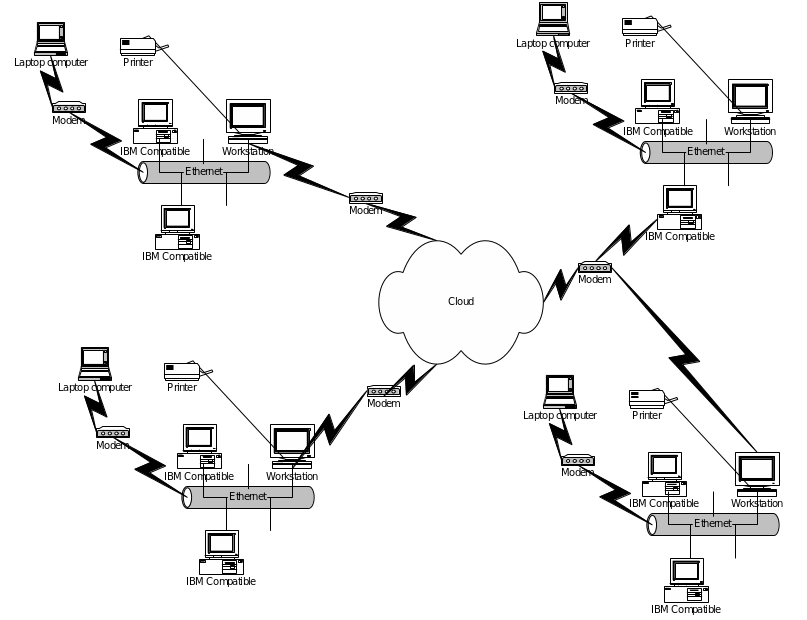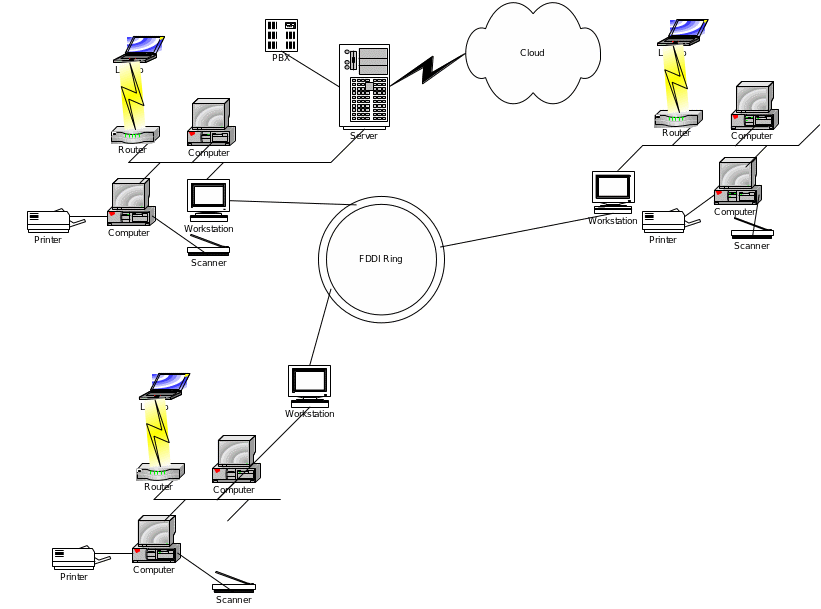Introduction
Huffman Trucking is a national transportation company founded in 1936 currently has an employee population of 1,400 people. This firm has its main mission as, being an adaptable and growing firm with the need to effectively serve within the competitive transport and logistical industry. Huffman wants to achieve this by initiating a business environment making use of leveraging technology. This arrangement is aimed at promoting business efficiency as well as maximizing client service. Huffman has its offices located in Los Angeles, California, New Jersey, Missouri, and St. Louis. Each office is responsible for its local data requirements managed locally.
Huffman Trucking has consideration for the latest emerging trends that are expected to fit well with its business processes thereby increasing their efficiency (Hagg & Cummings, 2008). The firm is considering employing these trends in the areas of hardware, network, and business systems. The management has received a recommendation detailing the main areas to be covered, the current shortcomings, and the likely remedies to these shortcomings.
This study will generally highlight some of these findings in the areas of hardware, network, and systems typical to Huffman Trucking.
Hardware infrastructure assessment
Huffman Trucking hardware inventory consists of a variety of hardware ranging from desktop computers, laptops, flatbed scanners, printers, faxing machines, wired telephone sets, internal modems, routers, bridges, switches, and local area network (LAN) cabling. This hardware varies in age and has been acquired from different vendors. The desktop and laptop computers used at some of the offices are of Apple Macintosh type whereas the remaining are IBM compatibles.
The firm’s telephone structure is currently supported by an outdated Panasonic PBX that is incapable of supporting voice mail. Most of the peripherals attached to the main hardware at each office are multi-vendor IBM-compatible devices. The cabling type used to support the LAN configuration at each of the offices and plant is the untwisted pair Cat 3 cabling.
A lack of standardization as far as hardware is concerned is currently the biggest hindrance to Huffman providing efficient service. Defining and understanding the business processes that achieve the firm’s strategy can be used to define the technologies to be adopted in supporting these processes (Baltzan & Philips, 2009). Currently, these technologies are governed by standards such as the open systems interconnection to ensure that the vendors manufacture products that adhere to interconnectivity standards. Maximizing efficiency will require Huffman Trucking to standardize its hardware platform across the offices.
The better option would be to have IBM-compatible computers at all offices supported by MAC laptops catering for mobile computing. The firm’s database can be located on a central database server running on Oracle RDBMS, backed by an email server running Exchange software. The desktop computers can be interconnected using the untwisted pair Cat 5 cabling with a much higher data transfer rate. The laptops can be interfaced through wireless connectivity supported by wireless routers and modems to the network through a web server running on UNIX as the operating system.
Network infrastructure assessment
Each of Huffman Trucking offices has a LAN with Cat 3 as the base cabling in a bus topology network. The bus topology has been adopted because of its simplicity and convenience to the business setup (Haag & Cummings, 2008).
See Diagram 1 in the appendix for the current network structure at Huffman Trucking.
These offices are currently interconnected through a commercial internet service provider through a frame relay connection. Huffman Trucking should consider embracing wireless technology to supplement their wired network structure. Mobile computing as part of wireless technology and especially suited for laptops and other portable devices is one of the emergent trends that are improving business process efficiency today (Laudon & Laudon, 2007). For standard and general cabling requirements at Huffman Trucking, Cat 5 cabling is considered a better option than the current Cat3 in terms of data transfer rates. See Table 1 in the appendix for a comparison of Cat 3 and Cat 5 data transmission speeds.
The firm’s wide are network can be implemented using the Fiber distributed data interface (FDDI) which is a dual ring backbone supporting the various bus topologies at the different offices. The FDDI has high capacity, high-speed data transmission rates making use of the fiber optic as its medium. See Diagram 2 showing an FDDI network configuration.
System infrastructure assessment
Currently, Huffman Trucking is experiencing inefficiencies due to incompatibility with its systems. Some of the offices have Apple computers preloaded with their own MAC operating system. Other offices are also using IBM-compatible computers running on the Windows 98 operating system. An upgrade to higher versions of the Windows operating system for example XP for the desktops and Server 2003 or later version is recommended. Alternatively adopting UNIX or Linux for the server platform is feasible. The server should support data communication protocols such as TPC/IP, IPX /SPX, Apple Talk as well as voice over internet protocol (VOIP) for both wired and wireless connections in order to ensure effective intercommunication of the various systems.
Conclusion and recommendation
While Huffman Trucking continues expanding its processes, it must be able to choose the technologies that will best drive these processes (Baltzan & Philips, 2009). Research reveals that the emerging trends and technologies covering telecoms, internet, and wireless connectivity are some of the viable options Huffman Trucking can consider (Laudon & Laudon, 2007).
It is therefore recommended that Huffman Trucking acquire IBM-compatible desktop computers for each of their offices while maintaining Apple Macs laptops for their mobile computing needs. They should also acquire a high-powered server to double up as a web and mail server preferably running Exchange 2x or Lotus Notes 2x, Server 2x, or Linux as the operating system. The server should also support protocols such as Apple Talk to enable communication with portable devices.
References
Baltzan, P., & Phillips, A. (2009). Essentials of business-driven information systems. New York: McGraw-Hill/Irwin.
Haag, S., & Cummings, M. (2008). Management information systems for the information age (7th ed.). New York: McGraw-Hill/Irwin.
Laudon, K.C., & Laudon, J.P. (2007). Management information systems: Managing the digital firm (10th ed.). Upper Saddle River, NJ: Pearson Prentice Hall.
Appendices
TABLE 1: Comparison between Untwisted pair cable Category 3 and Category 5.
Appendix 1

Appendix 2

